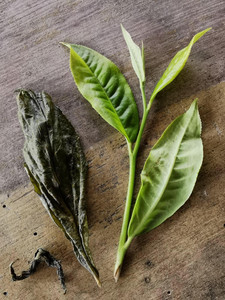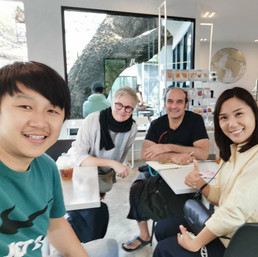In November 2022, we visited Watchara's tea farm in the remote mountains of Chiang Rai province in northern Thailand. Our friend P'Sak kindly drove us for hours on treacherous roads, taking us deeper into the mountains. Finally, we arrived at a mist-filled valley where three springs converge. Tea is indigenous to this area, and there are some primeval giants over 1000 years old here.
Camellia sinensis var assamica has been grown and cultivated here for centuries. The plantations were originally created for edible tea, known as "miang." Miang is made by packing fresh tea leaves into airtight containers and allowing them to ferment, much like sauerkraut. It used to be a beloved, highly nutritious, and potently energizing snack across much of Southeast Asia. These days, it is enjoyed mostly by older people and those who live in very rural areas. The fermented tea leaves are used to wrap ingredients like sugar, ginger, dried fish, or shrimp into a bundle and are popped into the mouth. The fermentation makes the tea leaves soft, sour, and funky! It is actually quite yummy but definitely an acquired taste.
Much of Watchara's family tea still goes into making miang, but luckily for us, a significant portion is also used to make tea. Our "house teas," the MiSA black and MiSA green, come from this magical place. The air is pure and far from any pollution, and the abundant moisture and fertile mountains create a unique terroir. The tea is both rough and refined. It carries a powerful cha qi, or "tea energy," from this wild place and the minimally processed approach of its production. The tea is handpicked and wild-grown, which means there are no inputs, not even organic fertilizers. The tea grows like every other wild plant in this diverse, high-elevation subtropical forest.
Love,












































